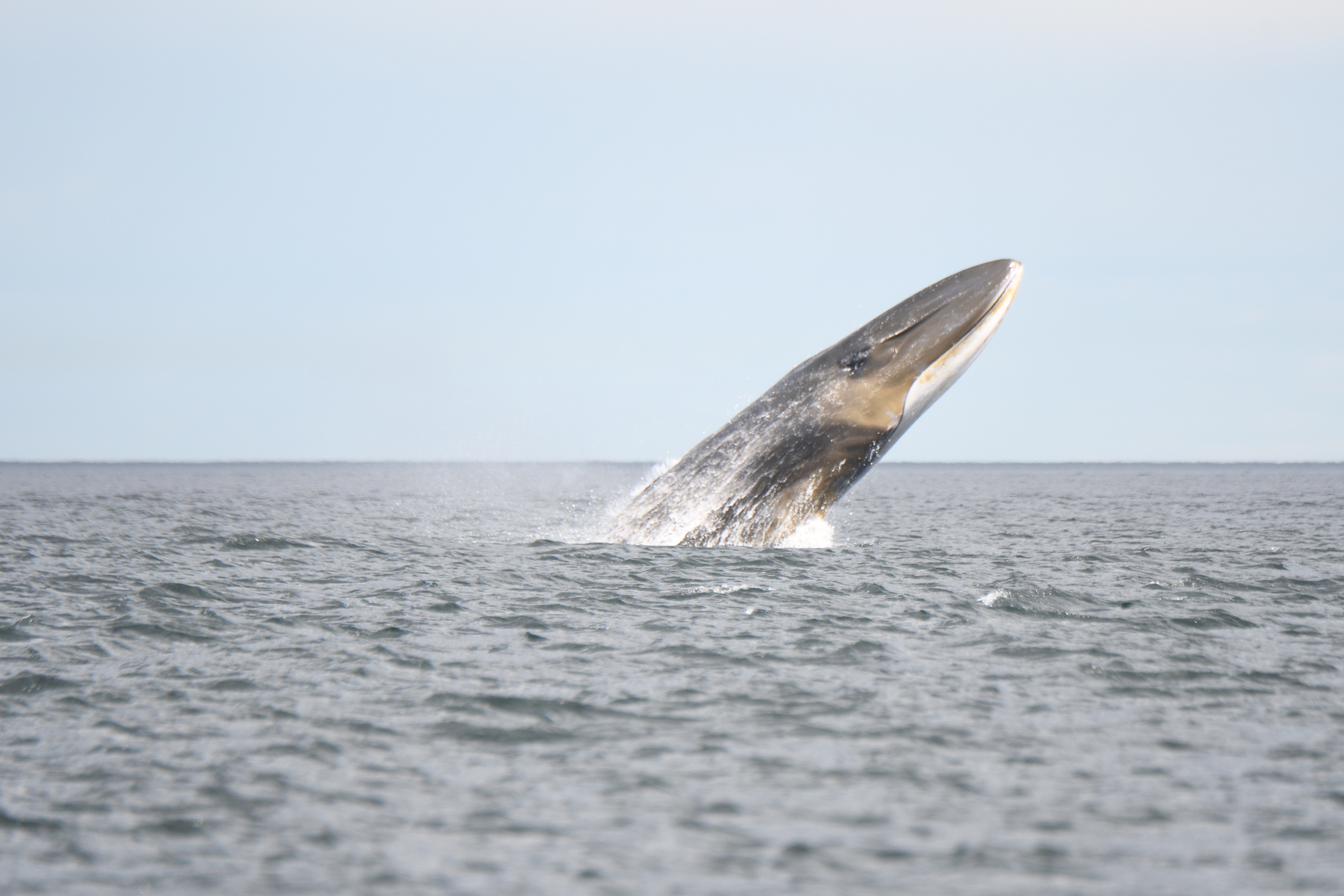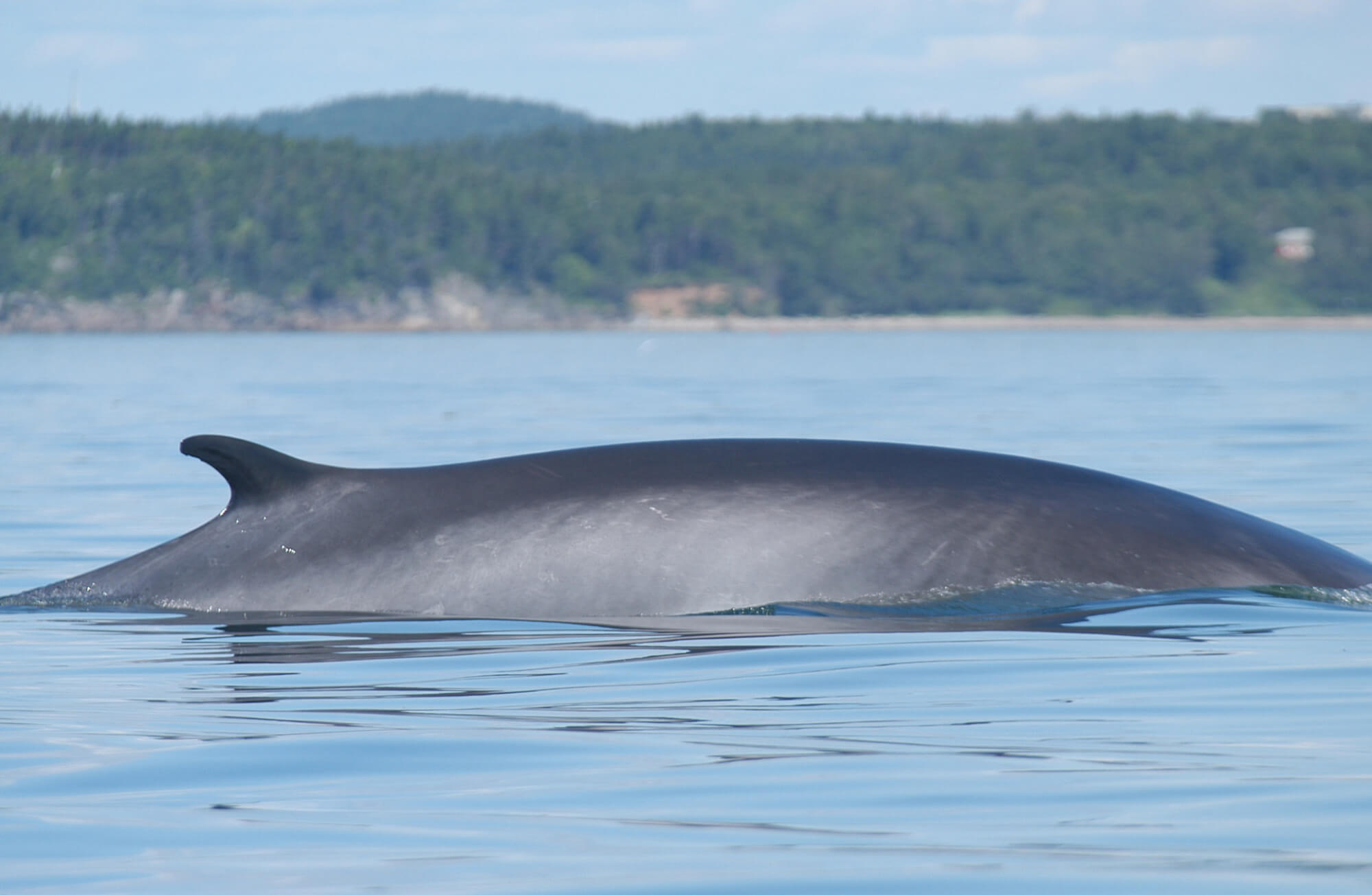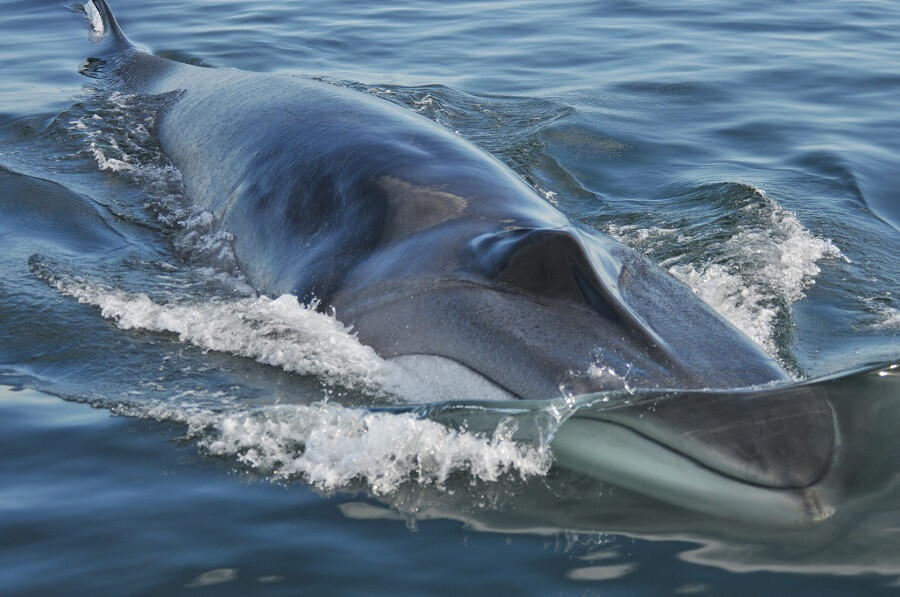The Mediterranean Sea is home to a unique population of fin whales that has evolved separately from the North Atlantic population, giving it a distinct genetic signature. Scientists have turned their attention to this population to study an uncommon behavior in this species: breaching. They have identified two factors: one of social origin, the other of human origin, both of which influence the likelihood of breach occurring.
Propelling forty tonnes out of the water
The fin whale, the second largest whale after the blue whale, is rarely seen jumping out of the water. In fact, the present study revealed that as few as 3.74% of sightings included breaches. Out of 721 encounters with these marine mammals, only 27 breaches were recorded. For a jump to be considered a breach, at least 40% of the animal’s body must be propelled into the air. To do this, this giant of the seas needs the same amount of energy required by a 60 kg person to run a marathon! Breachs therefore require the animal to consume a lot of its own energy. Not surprisingly, this is not a behavior they often adopt!
Jumping for its fellow creatures, but not for the boats!
The authors of a recent paper have explored potential associations between fin whale breaches and social, environmental and human factors. The population under study resides in the western Mediterranean Sea, and individuals migrate seasonally. They move northwards in spring to their feeding grounds in the Liguro-Provençal basin from April to September. In autumn, they start moving south to their breeding grounds on the North African coast. Observations for this project were made from ferries between Italy and Spain.
The results of this study reveal two variables associated with breach. The first was the distance between the observation platform and the whales. The greater the distance between the whales and the ferry, i.e. over 1,000 meters, the higher the probability of seeing this exceptional behavior. As a result, the majority of jumps recorded took place under these conditions. On the other hand, closer proximity to the whales seemed to discourage breaches. Only 3 jumps took place within 200 meters of the ferry. Thus, the authors consider the presence of the boat as a factor that discourages the behavior. The second variable identified was the distance observed between fin whales during the same crossing. The average distance varies with the seasons: it’s less marked in spring, increases in summer, then becomes even greater in autumn, changing with the rhythm of the migrations.
Other breach-related factors were also put forward. For example, breaches were more frequent in summer and autumn, while none were recorded in winter. The majority of these events, 75%, were observed in solitary whales. In the Pelagos Sanctuary, a marine area between Italy and France dedicated to the protection of marine mammals, larger groups seemed to encourage these breaches, compared with smaller groups.
A burning question
Although great whales regularly jump out of the water, little is known about the reasons behind these grandiose displays. How can this be explained? By identifying various factors associated with an increase or decrease in the frequency of leaps, researchers are able to hypothesize why they occur.
In this study, the proximity of the boat to fin whales was identified as a factor inhibiting breach behavior. The authors therefore hypothesized that this human-induced disturbance could lead to a change in their behavior. The other factor associated with this behavior – the distance between whales – suggests that breaching has a communicative function between individuals. However, the message conveyed could vary according to the season and their main activity at that time of year.
Individuals in this population breach more frequently on feeding grounds in summer, leading scientists to suggest that this behavior may indicate good health and the ability to refuel quickly. Also during the summer season, in the Pelagos Sanctuary area, these behaviors were also associated with larger groups. However, since jumping is mainly seen in summer when whale density is at its peak, it’s hard to say whether it’s the season of the year or the aggregation of individuals that’s to blame. However, these were solitary whales jumping out of the water in autumn, possibly indicating a reproductive or social function. Interestingly, no breaches were made by juvenile whales!
This study highlights the great mystery surrounding this behavior in large whales. But if we can’t explain it, we can continue to admire and be amazed!
Find out more
- (2022) Campana, I., Farace, I., Paraboschi, M., Arcangeli, A. Analysis of environmental, social, and anthropogenic factors as potential drivers of breaching behavior in the Mediterranean fin whale. Marine Mammal Science 2023: 1-17







